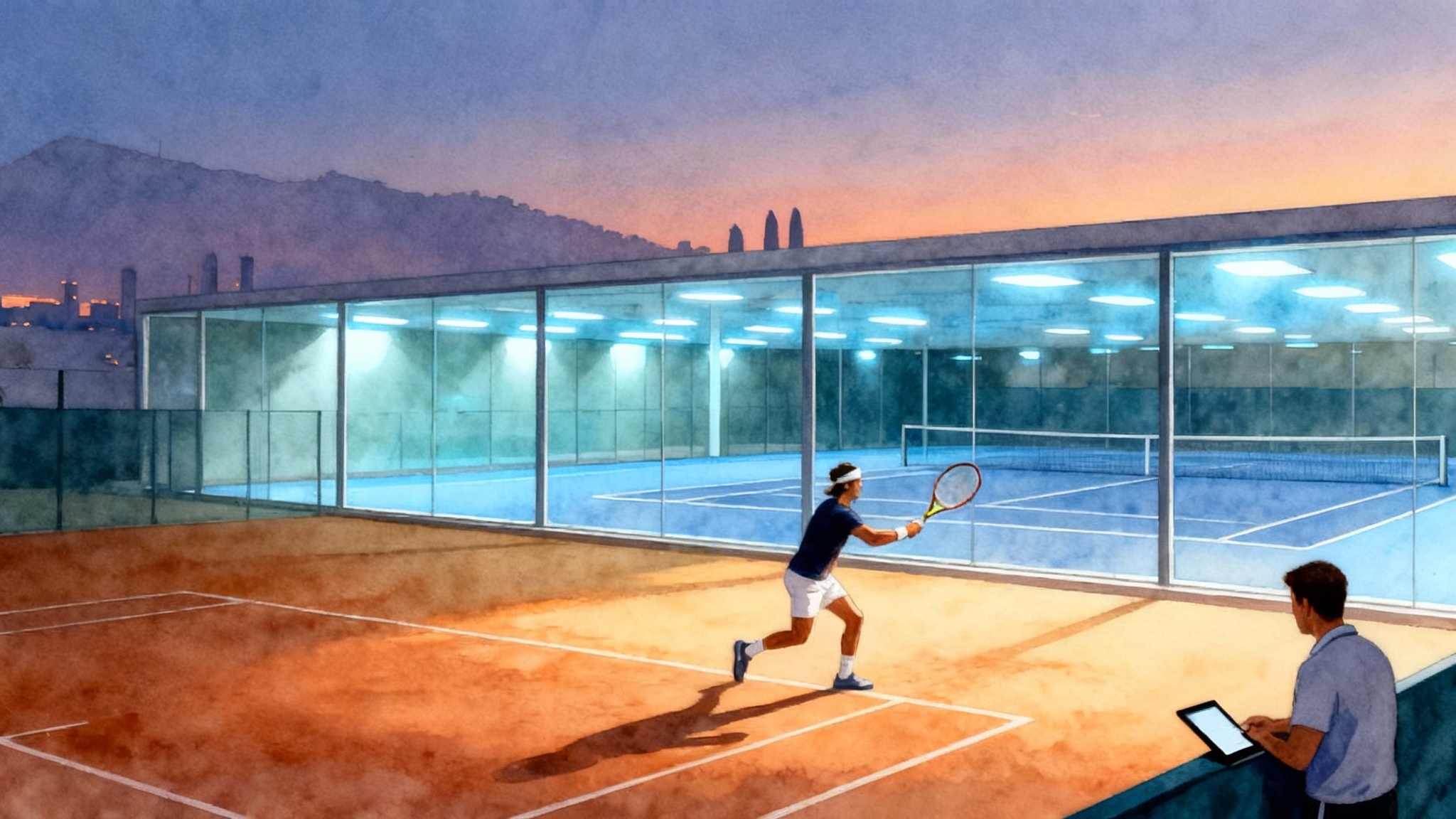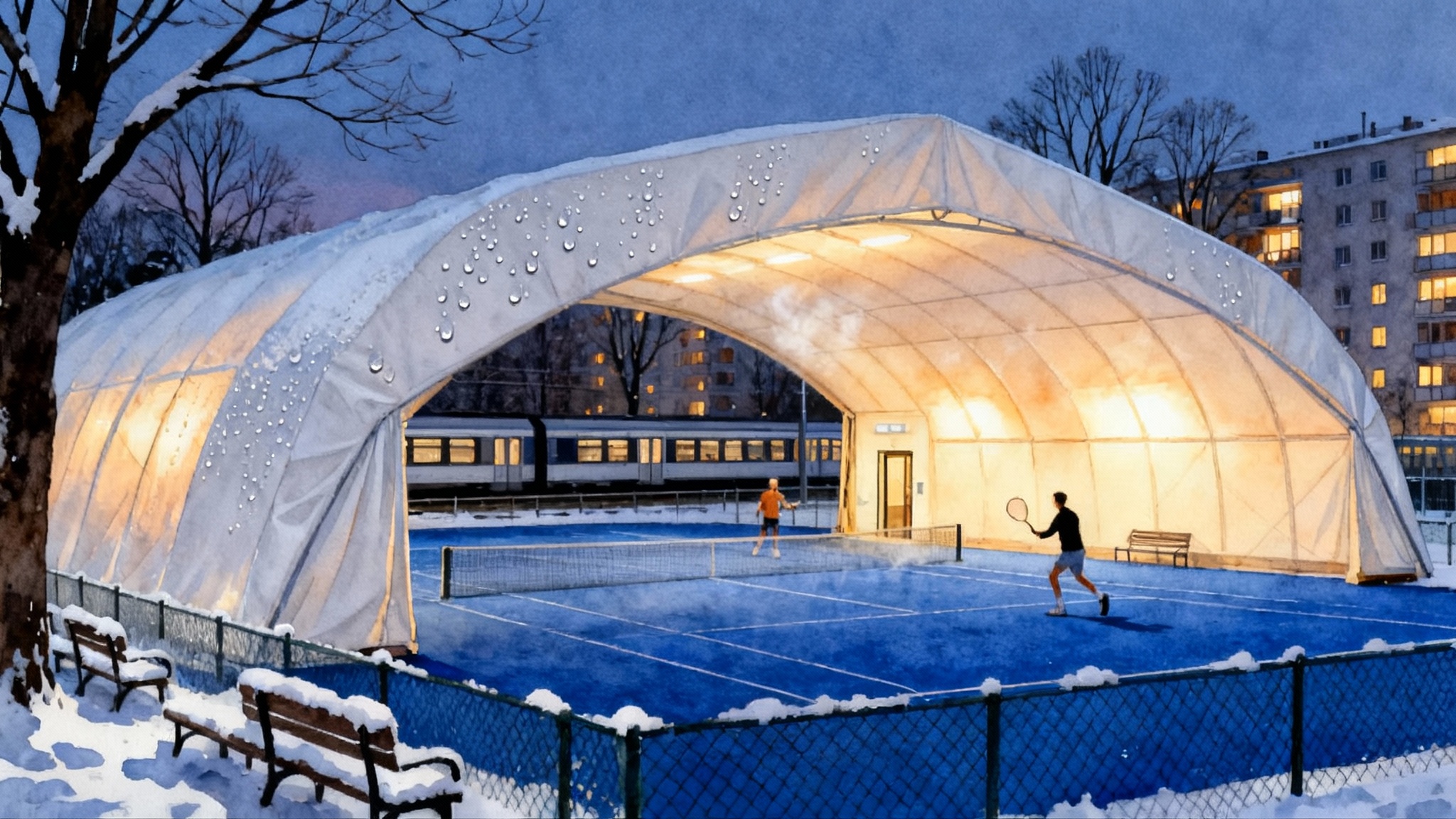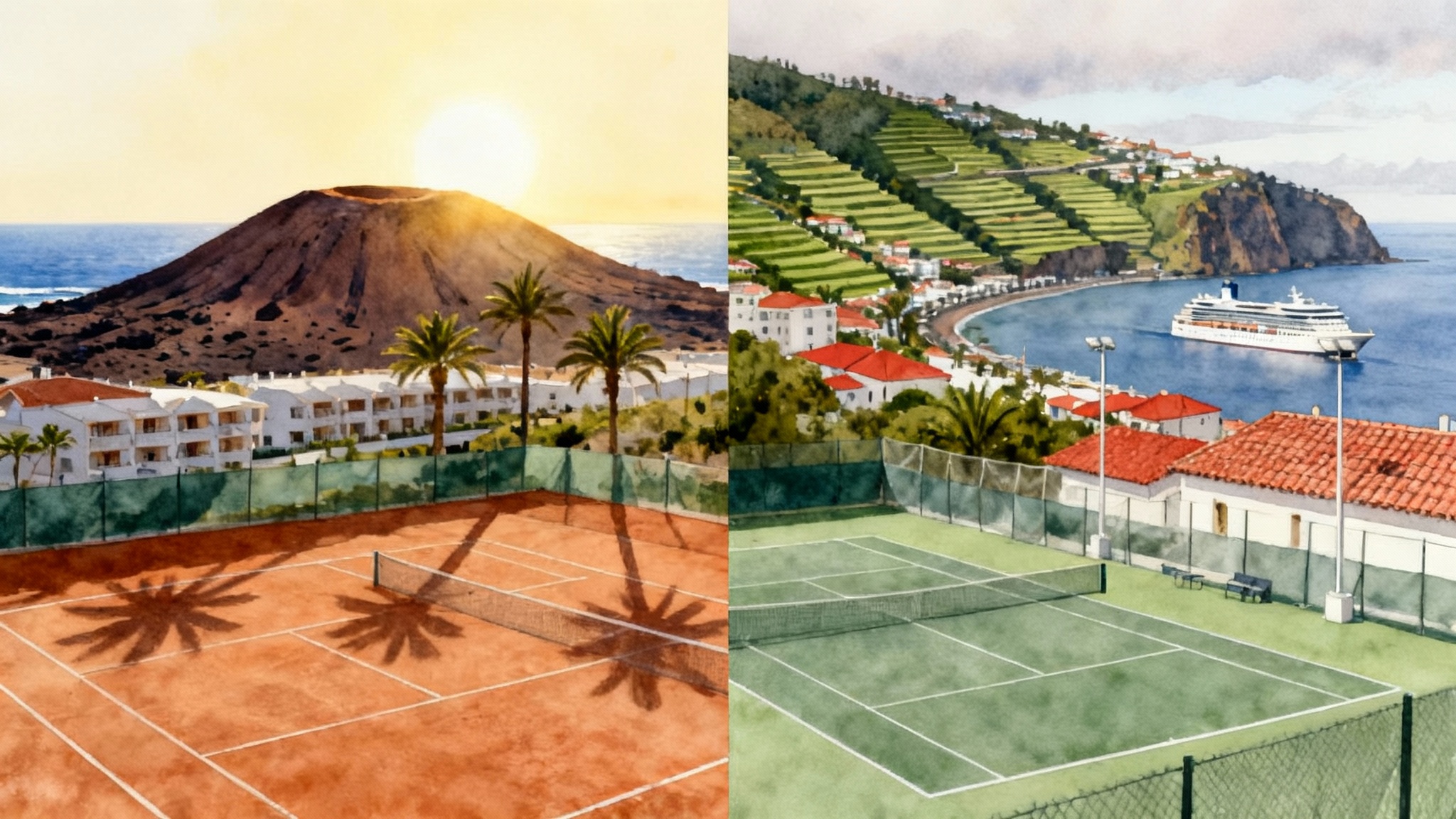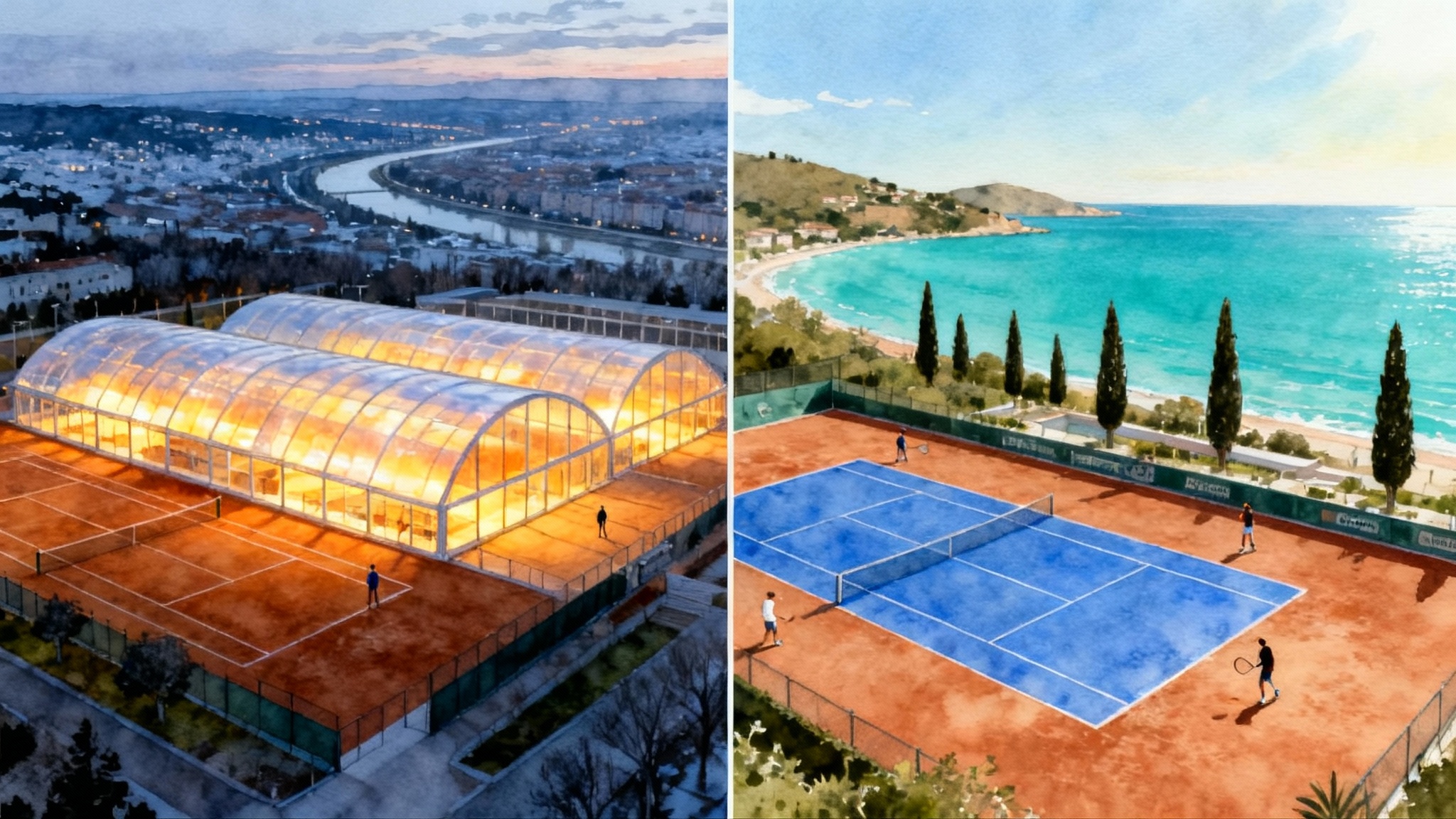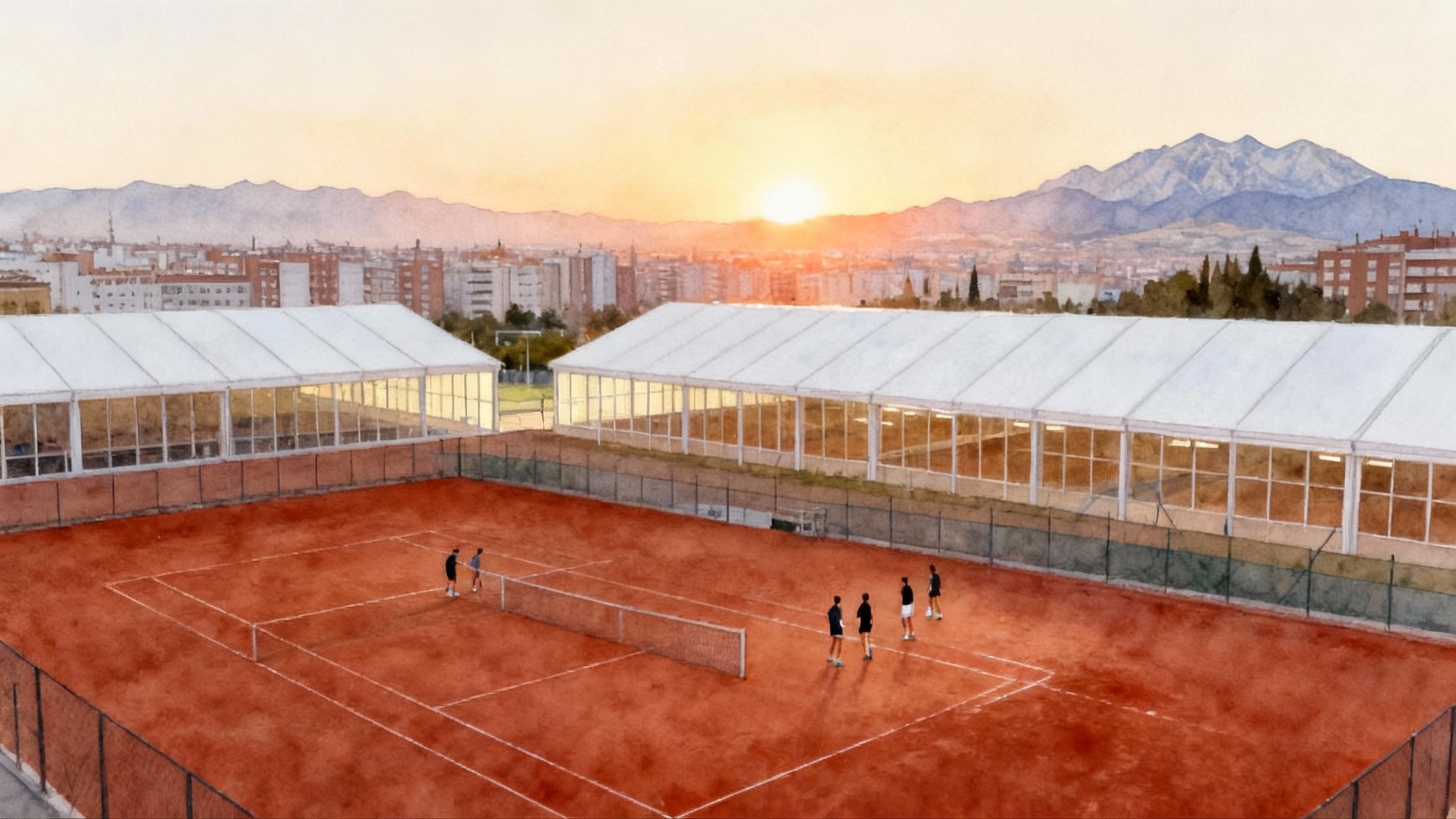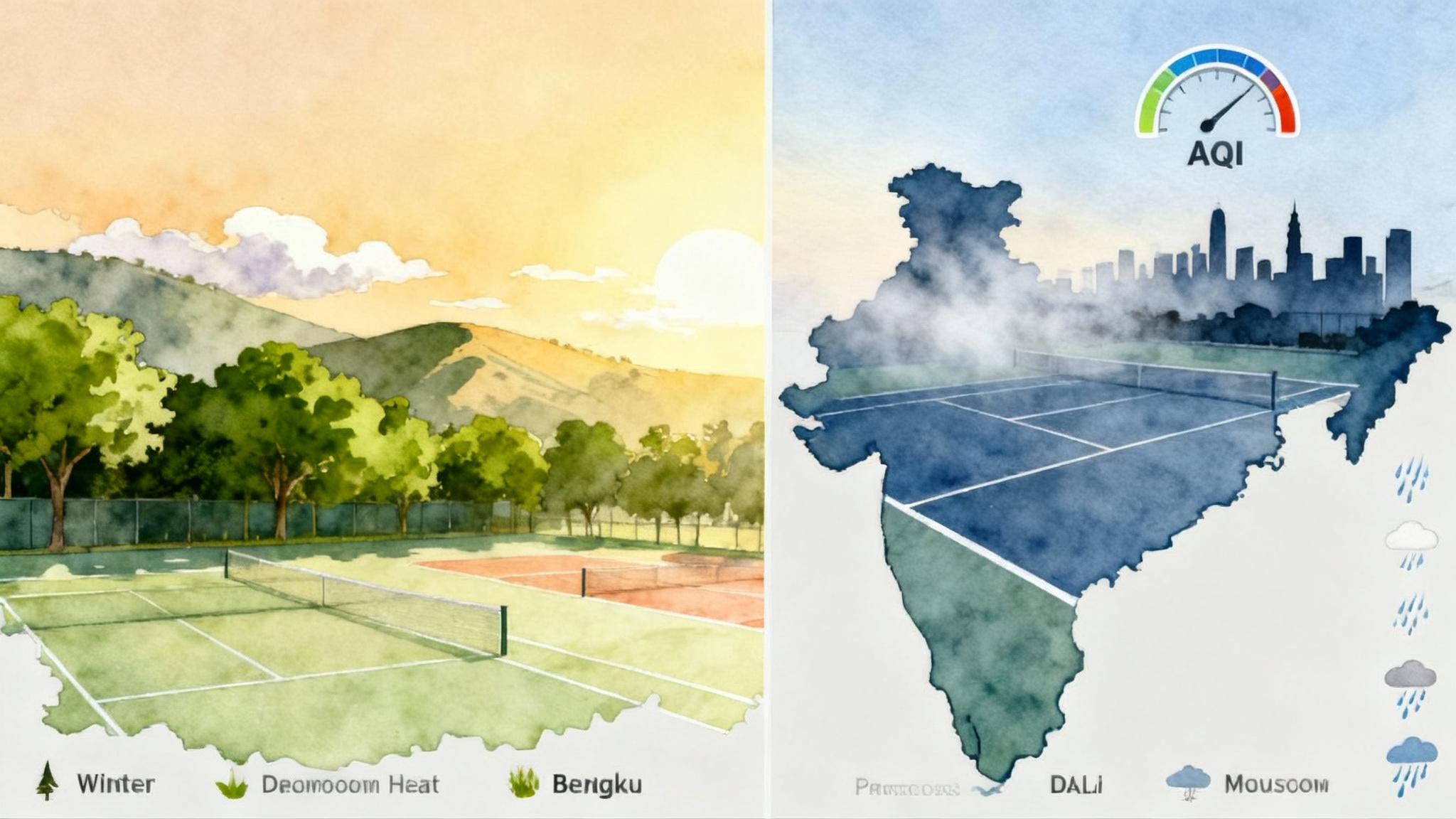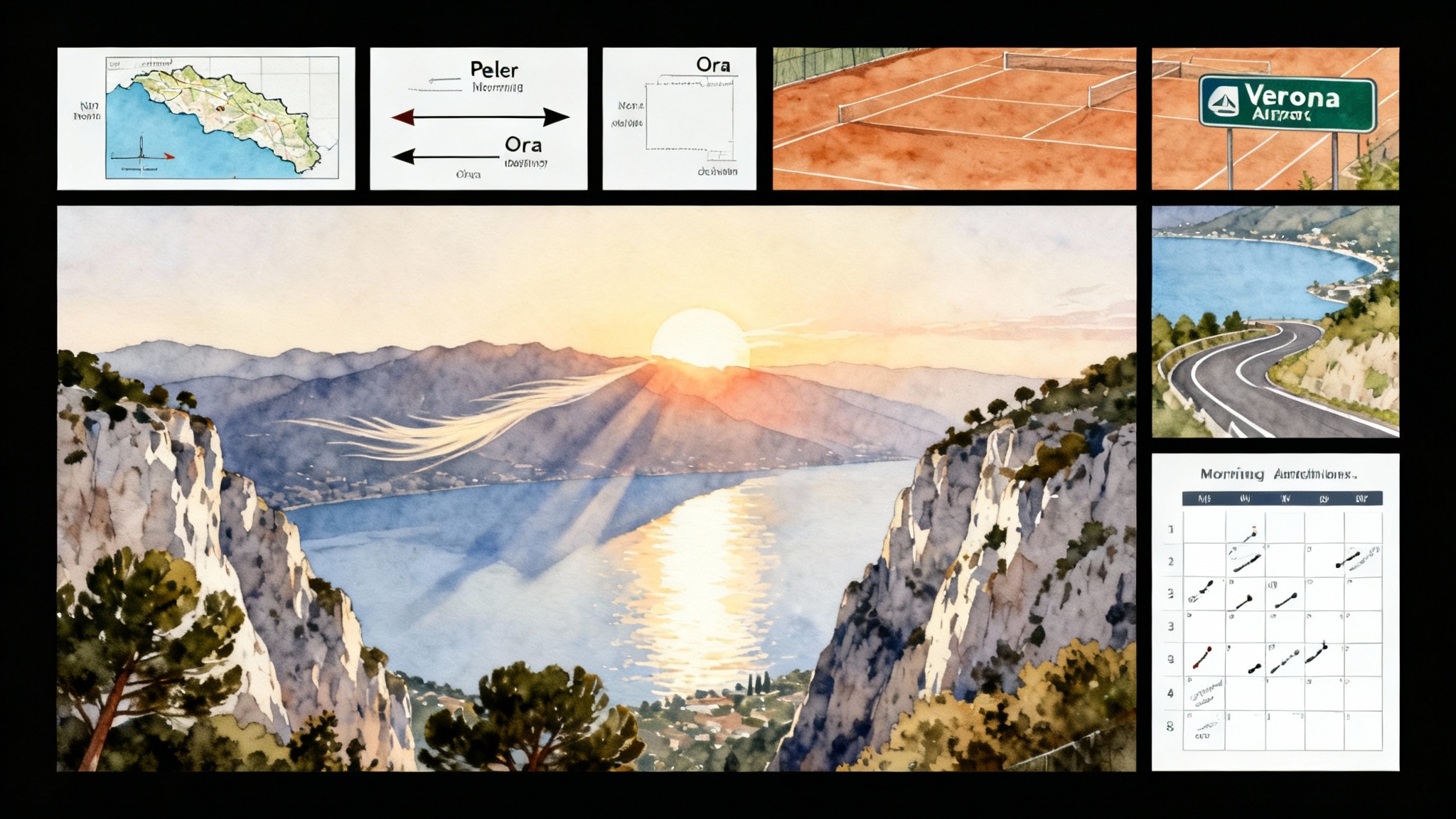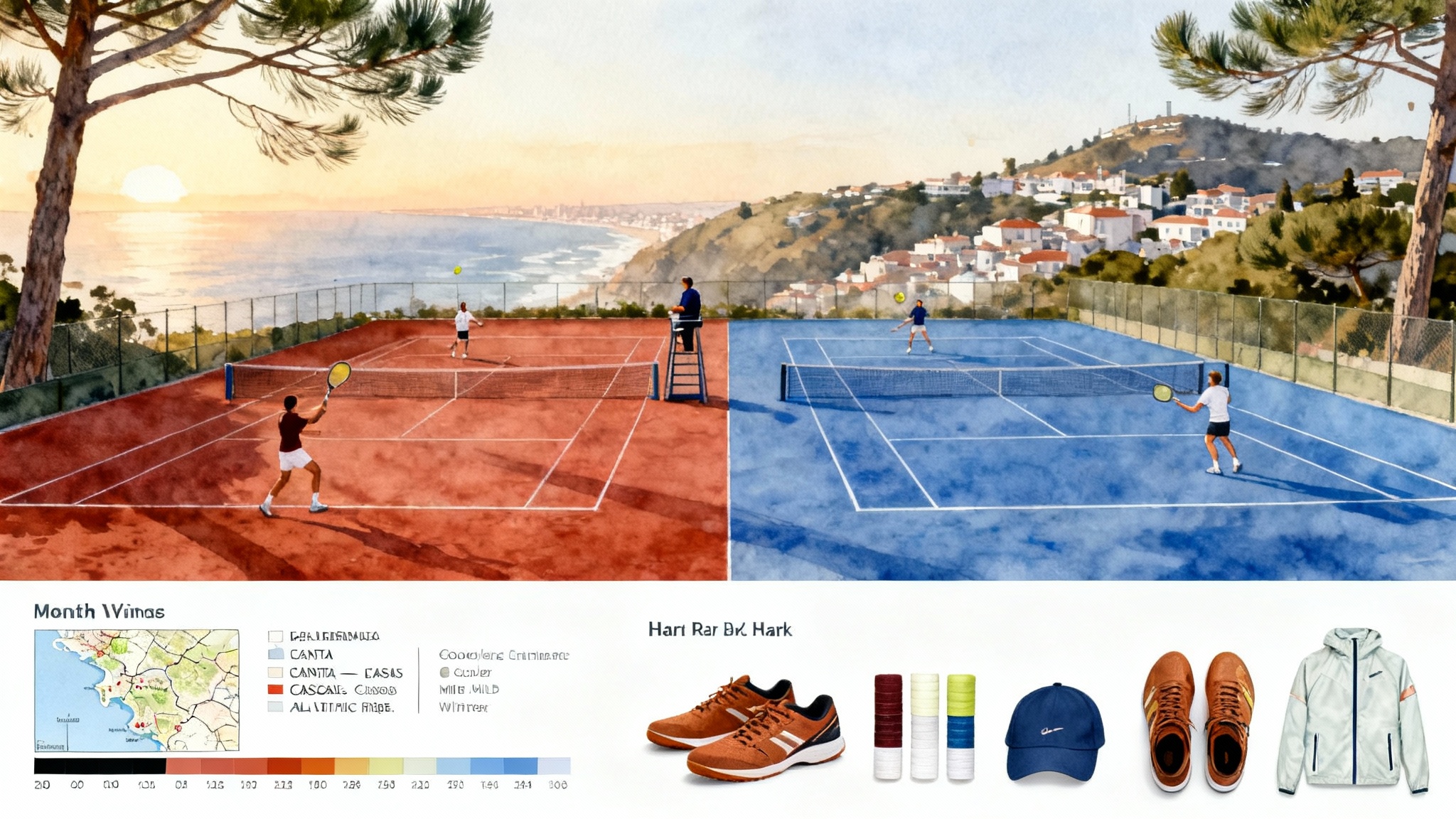Atlanta Tennis 2025–26: America’s Most Practical Year-Round Base
Thinking about a 2–8 week training block? Atlanta makes daily reps and constant matches easy. We explain the climate by season, court-dense neighborhoods, indoor options, weekly UTR and USTA entry, Life Time Peachtree Corners, budgets, and side trips.
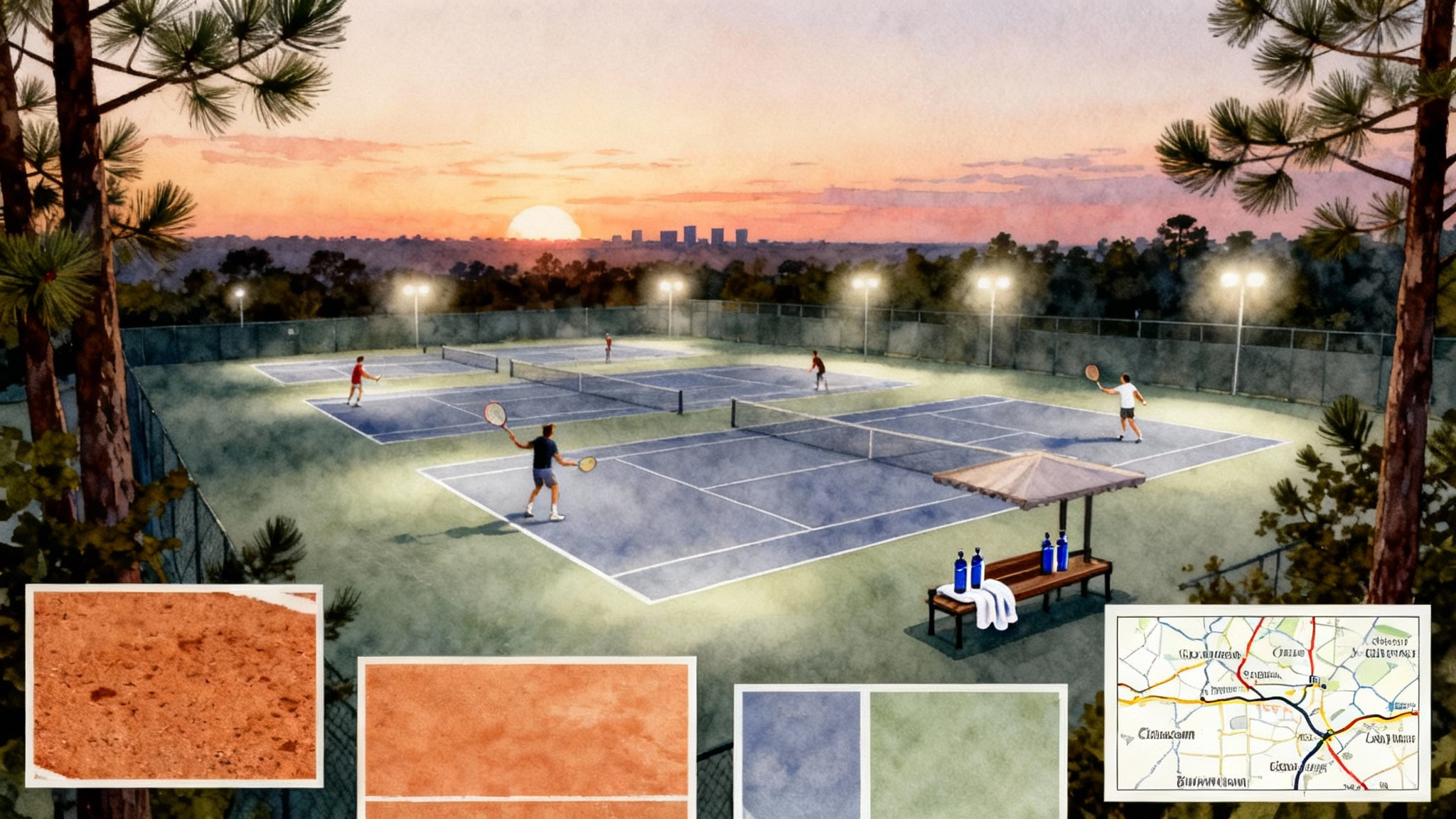
Why Atlanta works for 2–8 week blocks
If you are a junior chasing ranking points or an adult player sharpening for league season, Atlanta is the most practical base in the United States for a two to eight week push. The metro area has more public courts than most cities, club capacity that rivals tennis towns twice its size, and a weekly calendar of Universal Tennis and United States Tennis Association events that rarely goes quiet. Add an international airport that keeps flights competitive and family friendly suburbs where you can rent a house near courts, and the formula is simple: train in the morning, compete in the afternoon or evening, repeat.
The big idea is to concentrate your training inside a small travel radius. North of the city, neighborhoods like Peachtree Corners, Alpharetta, Johns Creek, Roswell, East Cobb, Sandy Springs, Brookhaven, and Decatur let you stitch together courts, coaching, and match play with minimal time lost in traffic. Base yourself near one or two hubs and you can play meaningful sets five to six days a week without burning out.
Climate by season: how it actually feels
Atlanta’s climate rewards year-round planning if you respect two things: summer humidity and occasional winter snaps. Here is the practical view by season.
- Winter, December to February: Daytime highs often land in the 50s Fahrenheit, with cold mornings in the 30s or 40s. You will practice outdoors most days; pack a light down jacket, tights, and gloves for early starts. Rain systems can linger for a day or two, so build an indoor or covered-court backup for test days where you must hit certain volumes.
- Spring, March to May: This is prime training. Highs in the 60s to 70s make doubles work and conditioning pleasant. Pollen is real, so athletes with allergies should bring antihistamines, saline rinse, and consider later morning sessions after dew burns off.
- Summer, June to August: Expect highs in the 80s to 90s with humidity. Plan two-a-days by front-loading quality in the morning, then short tactical hitting or match play near sunset. Summer pop-up storms are common after 3 p.m.; schedule flexible start times and know nearby covered courts.
- Fall, September to November: Another peak window. Temperatures become comfortable again, and match calendars fill up. You can stack three competitive days in a row without heat stress if you hydrate and sleep well.
If you prefer a warmer winter profile, compare options in our Sarasota Florida training guide.
Court-dense neighborhoods and reliable public hubs
Atlanta is a suburban tennis ecosystem. The practical approach is to lodge where courts are clustered and where traffic patterns favor you. A few reliable pockets:
- Peachtree Corners and Norcross: Close to Life Time Tennis Academy and several public centers, with many subdivisions that have neighborhood courts. Good for families who want a quiet base.
- Alpharetta and Johns Creek: Dozens of courts spread across parks and clubs, plus fitness and dining options for longer stays.
- Roswell and East Cobb: Public centers with multi-court capacity and a long-standing adult league culture that produces constant sparring partners.
- Sandy Springs, Brookhaven, and Buckhead fringe: Near city-center jobs for traveling parents, yet still minutes from public centers like Bitsy Grant and Blackburn Park.
- Decatur: Strong community programs and quick access to the east side of the metro.
Public tennis centers to keep on your map include Bitsy Grant Tennis Center near Buckhead, Sandy Springs Tennis Center, Blackburn Park Tennis Center in Brookhaven, and DeKalb Tennis Center. These sites handle volume, offer court reservations, and often host both Universal Tennis events and United States Tennis Association tournaments.
Indoor and covered-court options and what to expect on rainy days
Atlanta is not the Upper Midwest. Fully indoor tennis is limited, but you can still protect your training days if you plan.
- A few municipal and club sites have permanent indoor courts or seasonal bubbles. Slots book quickly when rain is in the forecast, so call early if the radar turns green.
- Several clubs use covered or partially covered courts that keep light rain off and allow play to resume within minutes after a shower.
- If you cannot get an indoor booking, pivot to strength and conditioning, tactical classroom time, or film review. A two-hour gym block plus 60 minutes of shadow footwork and serve mechanics salvages the day.
If you need a heavy indoor alternative, see our Berlin Winter Tennis 2025-26 guide.
Practical tip: keep a short list of indoor or covered courts within 30 minutes of your Airbnb, and set calendar alerts for the day-before weather check so you can reserve before the rush.
The weekly matchplay map and how to enter
For visiting players, the key is that Atlanta runs real matches almost every week of the year. Here is the rhythm you can expect in most months:
- Weeknights: Universal Tennis match nights or verified UTR events with two short-format matches. Great for squeezing competition between training sessions.
- Fridays: Flexible league or Universal Tennis events that pair locals and visitors by level.
- Saturdays and Sundays: United States Tennis Association junior and adult tournaments at Levels 5 to 7, plus Universal Tennis one-day or two-day events. Draw sizes vary, but the sheer number of venues means you can usually find something within a 30 to 45 minute drive.
How to register:
- United States Tennis Association: Use the Georgia tournament search to filter by level, age, and surface, then register directly on the platform. Start by scanning the USTA Georgia tournament calendar and set alerts two to three weeks ahead of your arrival.
- Universal Tennis: Search by location, date range, and format. You will see one-day match nights, verified events, and weekend draws across the metro. Build a watchlist using the UTR Atlanta event search and message directors with your travel dates.
You now have your two anchors: one platform for ranking-based draws and one for level-based play. Work backward from those dates to design your training week.
High-performance anchor: Life Time Tennis Academy in Peachtree Corners
The north side’s competitive gravity point is Life Time Tennis Academy in Peachtree Corners. For visiting juniors, it offers a high-performance program with structured drilling, fitness, and live-ball points alongside local and regional players. For parents and adult competitors, the same campus solves daily life: a full fitness floor for strength and cardio, indoor studios for mobility and recovery classes, pools for easy cross-training, a cafe for grab-and-go meals, and kids programming that keeps younger siblings happy while the older athlete trains.
What sets this hub apart is the ability to run a proper microcycle without leaving the property. Morning technique blocks, mid-day strength and movement, afternoon situational patterns, then an evening short-set round robin or a Universal Tennis match night. Teams and family groups can scale lanes on adjacent courts, and coaches are used to building short-term blocks for visitors. Ask for a short assessment on day one so your athlete slots into the right training pods.
Sample 7-day microcycle for a visiting junior
This plan assumes a Sunday arrival and a Saturday or Sunday tournament.
- Day 1, Sunday: Travel, light recovery run or pool loosen, 20 minutes of band work, early sleep.
- Day 2, Monday: Morning technique at Life Time Tennis Academy focusing on serve and first ball; afternoon movement session; evening Universal Tennis short sets if available. Total on-court 2.5 hours.
- Day 3, Tuesday: Pattern play on forehand plus transition volleys; 45 minute strength block; video feedback. Optional evening doubles points. Total on-court 3 hours.
- Day 4, Wednesday: Live-ball drilling; tactical set play to seven by two up; easy aerobic bike or swim. Total on-court 2 hours.
- Day 5, Thursday: Match rehearsal. Two best-of-three short sets with coaching timeouts. Mobility session. Register for weekend tournament if not already done. Total on-court 2 to 2.5 hours.
- Day 6, Friday: Sharpening. Serve targets, return plus two, plus 45 minutes of situational tiebreakers. Early dinner and hydration plan. Total on-court 1.5 hours.
- Day 7, Saturday: Tournament day one. Warm up 75 minutes before first ball, then post-match routine and short film notes. If no tournament, play a verified Universal Tennis event.
Adjust the intensities based on heat and matches scheduled. In summer, shift heavy work to mornings and put verified matches after 6 p.m.
Sample 14-day build for an adult competitor
Week 1 is skills and volume. Week 2 is specificity and taper into a weekend draw.
- Day 1, Sunday: Arrive and loosen. 30 minutes of serves. Light core and hips.
- Day 2, Monday: Morning technical lesson; afternoon doubles clinic; evening singles ladder set.
- Day 3, Tuesday: Pattern day with cross-court forehands and direction change; mobility class.
- Day 4, Wednesday: Live-ball drilling plus 60 minutes of point play; Universal Tennis match night.
- Day 5, Thursday: Strength session emphasizing posterior chain; 90-minute set play with serve plus one focus.
- Day 6, Friday: Doubles returns and poach patterns; early night.
- Day 7, Saturday: United States Tennis Association singles or doubles event, or scrimmage day with two short sets.
- Day 8, Sunday: Active recovery. Pool, sauna, foam roll. Review video.
- Day 9, Monday: Lesson on returns; afternoon hitting partner for depth control.
- Day 10, Tuesday: Two-set practice match; 30 minutes of serve targets.
- Day 11, Wednesday: Light live-ball and volley finishing; Universal Tennis match night.
- Day 12, Thursday: Taper. Short court, feel-based serve and touch work. Sleep focus.
- Day 13, Friday: Final tune. 45 minutes at 70 percent, then off feet.
- Day 14, Saturday or Sunday: Tournament weekend.
Adults with family in tow can split time between training and the Life Time fitness floor, letting non-players use the pool and kids spaces while you focus.
Budgeting your block: realistic ranges
Costs vary by season and how centrally you want to stay, but these working ranges will help you plan a two-week stay for one athlete and one adult.
- Courts: Public court reservations typically run 5 to 15 dollars per hour where fees apply, with many parks still free. Private club guest fees range from 15 to 30 dollars per person per session when accompanied by a member or coach.
- Coaching: Expect 90 to 150 dollars per hour for high-performance private lessons, 40 to 70 dollars per player for small groups, and 30 to 60 dollars for a strong local hitting partner.
- Training programs: Weekly high-performance blocks at a top academy often range from 350 to 600 dollars for five half-days, more for full days with fitness.
- Housing: A clean two-bedroom rental home or apartment in Peachtree Corners, Alpharetta, Sandy Springs, or Roswell ranges from about 900 to 1,800 dollars per week depending on proximity and season. One-bedroom options can be 700 to 1,200 dollars per week.
- Car: Expect 300 to 600 dollars per week for a compact rental. Rideshare works for city-center trips, but a car keeps training predictable.
- Tournament entries: Universal Tennis match nights often cost 25 to 50 dollars. Weekend United States Tennis Association events range from 50 to 100 dollars per division.
- Food: 250 to 400 dollars per person per week if you cook breakfast and dinner and grab lunches on site.
Two-week example for a junior and a parent who want comfort but not luxury: 1,400 dollars housing, 800 dollars car, 800 dollars coaching and academy, 250 dollars court fees, 250 dollars tournament entries, 700 dollars food. Total about 4,200 dollars, plus flights.
Where to stay and how to commute
- Peachtree Corners and Johns Creek: Ideal if Life Time Tennis Academy is your anchor. Quiet subdivisions, good grocery options, and short drives to multiple centers.
- Alpharetta and Roswell: Slightly farther from the city, with many public courts and strong junior communities.
- Sandy Springs and Brookhaven: Useful if one parent needs to be near the city. You will still be within 30 to 40 minutes of northside hubs.
Morning drives are kinder than late afternoon. Book courts and lessons before 10 a.m., then hold evenings for match nights when traffic has eased.
Surfaces and smart side trips: Charleston and Birmingham
Atlanta is primarily hard courts with meaningful pockets of clay. To round out your surface profile, build one or two short trips.
- Charleston, South Carolina: Roughly five hours by car. The Daniel Island complex around the Credit One Stadium is a green clay hub, and many Charleston clubs lean heavily on clay. Plan a Friday afternoon drive, clay training on Saturday, and a Sunday scrimmage before returning.
- Birmingham, Alabama: Around two and a half hours west. Pelham Racquet Club and other area facilities offer green clay and hard courts. It is a shorter trip that fits mid-block if you want a two-day clay immersion without losing momentum at home base.
These trips expand a junior’s college-recruiting résumé by showing versatility and give adults a low-impact week to build touch and patience.
Nutrition, heat, and recovery you should plan before arrival
- Hydration protocol: In warm months, pre-load with water and electrolytes at dinner and again at breakfast. Bring two bottles to every session: one water, one with electrolytes. Aim for 12 to 20 ounces per hour depending on heat and body size.
- Shade and cooldowns: Use the many tree-lined parks or club shade structures to bring heart rate down between sessions. A ten-minute cooldown is not wasted time; it is how you keep the next session high quality.
- Recovery menu: Contrast showers, pool sessions, and easy spin bikes are widely available at multi-sport clubs. Build them into the plan, not as an afterthought.
Putting it all together: a practical weekly template
- Monday to Thursday mornings: Technical and pattern blocks at Life Time Tennis Academy or your chosen hub. 90 to 120 minutes.
- Monday to Thursday mid-days: Strength and movement, mobility class, or film review. 45 to 60 minutes.
- Two evenings: Universal Tennis match nights or in-house ladder sets. Book early.
- Friday: Taper and serve targets. If not competing, schedule a two-hour live-ball block.
- Saturday and Sunday: United States Tennis Association event or a two-set practice match followed by doubles points. Keep one half-day open for family time.
How visiting families make it enjoyable
Bring a clear daily plan and a short list of non-tennis anchors. Parks on the Chattahoochee River offer easy hikes, and the northside suburbs have bike paths and greenways. Families often time training around a late morning coffee stop and let siblings choose an afternoon swim or playground. The metro has enough indoor museums and aquariums to cover rainy hours without derailing the block.
Final checklist before you book
- Choose your base neighborhood and shortlist three public centers within 15 minutes.
- Contact Life Time Tennis Academy in Peachtree Corners to request an evaluation and a two-week or four-week schedule.
- Scan the USTA Georgia tournament calendar and the UTR Atlanta event search for your dates. Register early.
- Reserve a compact car and confirm parking options at your rental.
- Build a heat plan and an indoor backup list for rainy days.
- Pack bands, a jump rope, and a small tripod for phone video. Your development accelerates when feedback is immediate.
The takeaway
Most cities deliver either courts or competition. Atlanta gives you both, nearly every week of the year, in a format that fits real life. Choose a northside base, anchor your days at a training campus like Life Time Tennis Academy in Peachtree Corners, and layer in Universal Tennis and United States Tennis Association competition. In two to eight weeks you can upgrade technique, sharpen match habits, and leave with a deeper match log and better movement. That is what a practical year-round base should do: remove friction so you can do the work that moves the needle.
